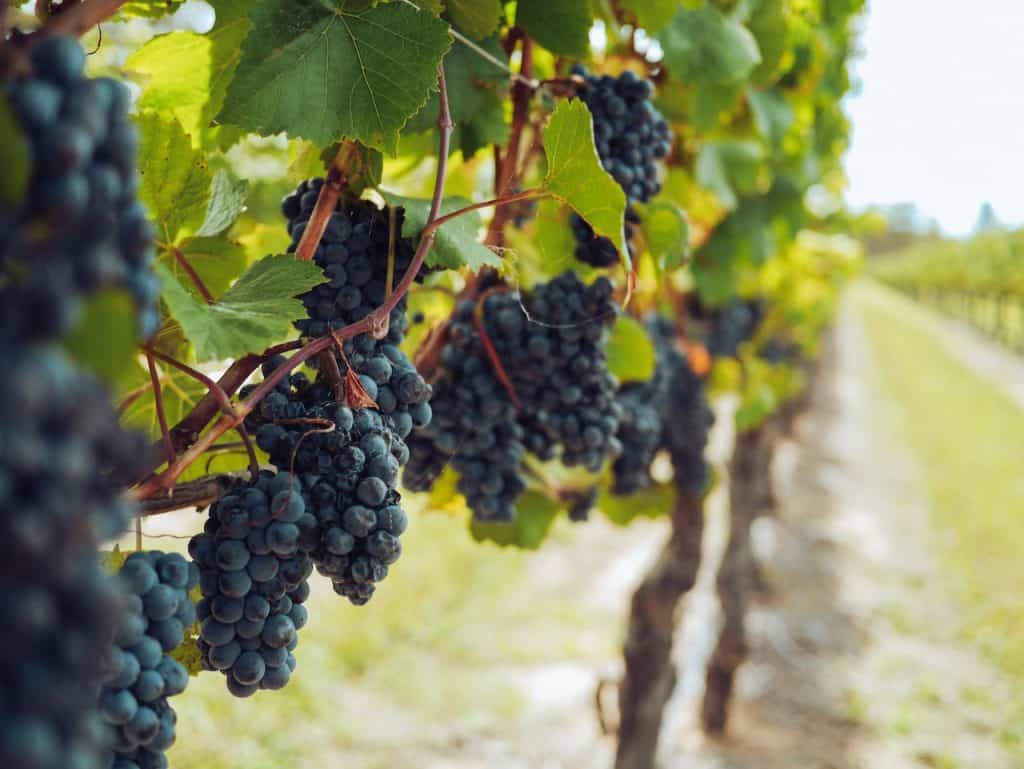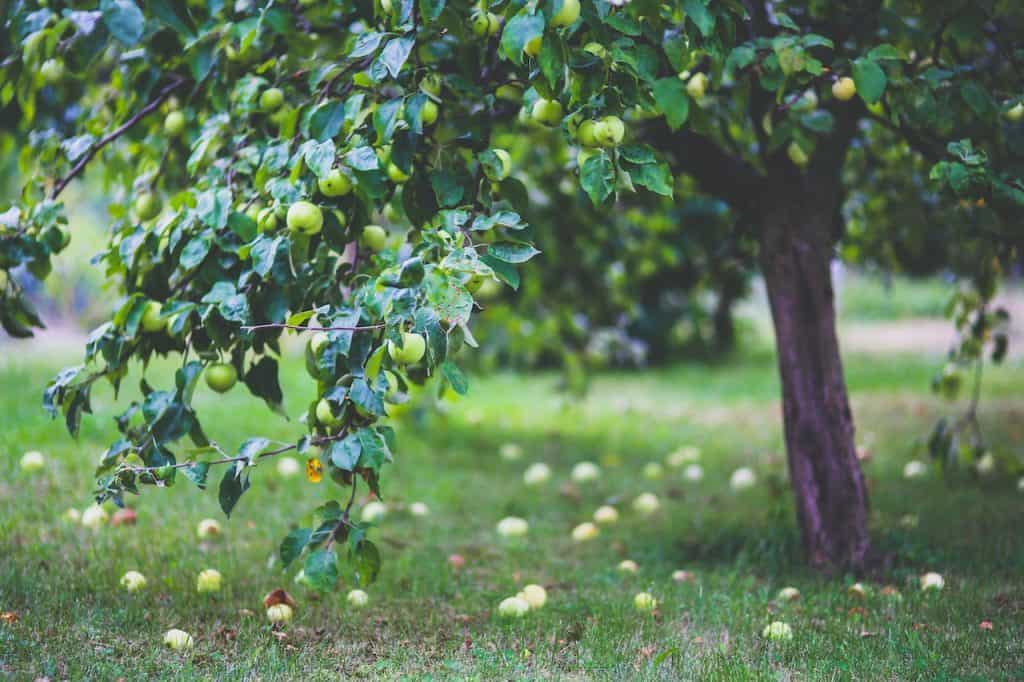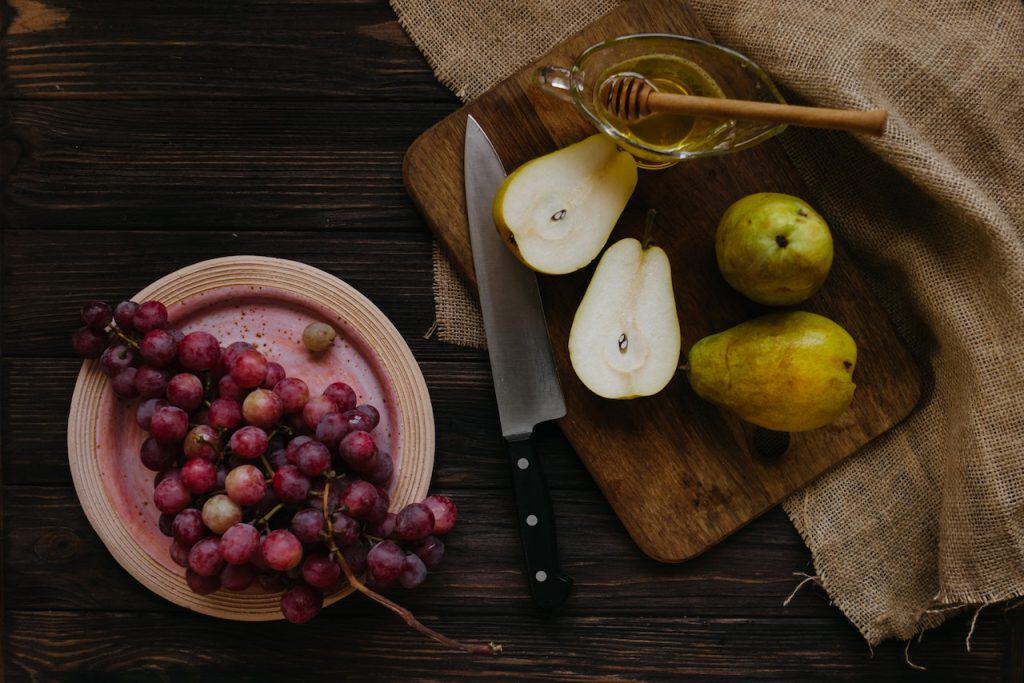Are you studying the poem ‘Wild Grapes’ by Kenneth Slessor for English and struggling to come up with your analysis?
Don’t fret! We’re going to walk you through the key ideas of ‘Wild Grapes’ as well as give you a step-by-step of how to analyse the text. PLUS you can get access to a sample analysis table (also called a TEE table) and a sample paragraph for the poem.
It’s time to ace your analysis of ‘Wild Grapes’ — let’s go!
Wild Grapes by Kenneth Slessor Summary
Context
Themes Explored in Wild Grapes by Kenneth Slessor
Studying this Text for the HSC
Analysis of Wild Grapes by Kenneth Slessor
Summary of Wild Grapes by Kenneth Slessor
Wild Grapes is a poem that laments the memory of an abandoned orchard and the girl Isabella. The speaker is the only person to return to this orchard and the wild Isabella grapes are the only sign of life or memory.
The first two stanzas begin with descriptions of the orchard. Hope has gone sour in the swamped and marshy orchard.
Here, Slessor subverts the Romantic notion of the bucolic countryside. The purebred apple and cherry trees tended by the settler Hartigans and Mulligans have long diminished, but Isabella grapes are in flourish.
As the speaker moves into the third and fourth stanza, the imagery of the Isabella grapes shift to the speaker’s thoughts of the girl Isabella. Like the clinging grapevines, the speaker’s memory of Isabella lingers and words such as gipsy, outlaws and half-savage stand out as ephemeral descriptions of the girl and the black-furred grapes.
The girl Isabella is dead, but the poem’s ending remains ambiguous of how she was killed.
Context of Wild Grapes by Kenneth Slessor
When we look at Slessor’s poetry, we can see that he often explores modernist ideas of melancholy and other literary movements in his language.
Modernism in Australian Poetry
Though we consider Slessor an Australian poet, Slessor renunciated the popular Australian Bush poetry of the early 20th century. Instead, he pioneered the literary movements happening in 1920s-30s Europe and America to the Australian reading public.
Slessor was a modernist poet and was inspired by the works of Alfred Tennyson, Ezra Pound and Wilfred Owen. Thus, we naturally have the modernist themes of melancholy and cynicism that brush Slessor’s style.
Here’s what Vincent Buckley figures had to say about Slessor and modernism:
‘there runs throughout his poetry a faint ground-bass of disgust with life’ — Australian poet and literary critic Vincent Buckley
On the other hand, Slessor also advocated for Nietzschean ideas of beauty and life, which focussed on individualism and the everyday moments of beauty. Even in Wild Grapes, the desolate orchard has a sense of haunted beauty that softens the regret in the poem.
Shakespeare’s Othello
We can interpret the last two stanzas of Wild Grapes as a reference to Shakespeare’s Othello, where Shakespeare’s tragedy is translated to a colonial Australian context.
The words ‘black’, ‘gispy’, ‘outlaws’ and ‘half‐savage’ (albeit, distasteful adjectives in our current milieu) point to Isabella’s Indigenous background and reflect the marriage between Othello and Desdemona.
Also studying Othello for English? Check out our list of quotes from the play!
We can point this out in the last line of Wild Grapes, ‘Kissed here – or killed here – but who remembers now?’, which parallels Othello’s line in last soliloquy ‘Desdemona. I kissed thee ere I killed thee’.
Themes Explored in Wild Grapes by Kenneth Slessor
Time
The passage of time is one of Slessor’s most prominent themes. In Wild Grapes, time is not only inexorable but tragic and destructive.
The Hartigans and Mulligans have ‘vanished’ and the complete absence of life (where the swallows never stir) in the orchard shows an almost apocalyptic scenery.
Death and memory
Ironically, death and memory come alive in Wild Grapes. Stanza 2 is written entirely as a memory of the orchard before it was ruined.
Reading Stanza 3 and 4, the ghostly figure of Isabella who haunts the orchard feels palpable.
Yet, for Slessor, memory is unreliable and there is no space for nostalgia. The Isabella grapes and the girl Isabella become blurry and interconnected figures in the speaker’s memory.
Also analysing a poem from T.S. Eliot? Check out our full analysis of Rhapsody on a Windy Night!
The ending line ‘Kissed here – or killed here – but who remembers now?’ leaves the fate of Isabella open-ended, and even insignificant to the present moment.
Beauty VS Pain
Painful and melancholic things can give us the most beautiful moments. Though this can be a difficult notion to grasp, consider how Slessor describes the grapes of the abandoned orchard as ‘harsh sweetness’ or how he tackles the poem’s tragedy with a gentle rhyme scheme.
Slessor, as a poet who rejected romanticism, asks the reader to perceive beauty and harrowing pain simultaneously — that they cannot exist outside of each other.
Studying this Text for Texts and Human Experiences
Link #1: Anomalies, paradoxes and inconsistencies in human behaviour and motivations.
The struggle between accepting time passing is a central human inconsistency that is shown in the poem.
In the first two stanzas, the poem is laden with rotting imagery against the speaker’s memory of the beautiful orchards. The speaker suffers as a result because he desires his old memory of the orchards, once tended by the Hartigans and Mulligans.
This changes in the last two stanzas as it’s only when he notices the wild grapes for its beauty — here, the pattern is reversed and the poem’s imagery becomes more beautiful, paradoxically, against the backdrop of rot and desolation.
Link #2: Individual and collective human experiences
Although the speaker laments the colonial memory of the bygone Hartigan and Mulligan orchards, the melancholia speaks to a larger sense of grief and loss that accompanies the passage of time.
Slessor excellently manages to translate the speaker’s unique sorrow into a feeling we can all understand.
How to Analyse Wild Grapes by Kenneth Slessor in 3 Steps
Often students will try to start with their thesis when trying to answer an essay question. Instead, start with your analysis! You need to equip yourself with the knowledge of your text before you can answer anything about it.
After you’ve analysed your text, you can draw ideas from it, then you can build your thesis!
We’re going to walk you through creating an analysis for ‘Wild Grapes’ in three simple steps!
Step 1: Choose your example
The best way to choose an example is to find a technique. The technique is the key to unlocking deeper meaning in a text, which you will need in your analysis.
Looking for quotes from poetry by Kenneth Slessor? Check out our comprehensive list!
We have chosen to look at lines 9-10 in Stanza 2 of Wild Grapes:
But wild ones, Isabella grapes they’re called,
Small, pointed, black, like boughs of musket-shot.
Step 2: Identify your technique(s)
When trying to find a technique within your example, it’s not about finding the fanciest technique or just any old technique for that matter!
It’s about identifying a technique which will enable you to say something about your idea that’s interesting and can contribute to your argument and analysis.
Try to focus on finding examples with techniques which unveil a deeper meaning like metaphors, similes, figurative language, connotations, symbolism and recurring motifs. Other techniques like alliteration and repetition are a bit harder to find a deeper meaning in!
We have identified 5 techniques in the quote above: consonance, contrast, diction, enjambment and simile.
It’s always great to try and find multiple techniques in your quotes as it allows you to take your analysis up a notch!
Step 3: Write the analysis
When you write the analysis, it is important to always focus on what the effect of the technique is. One of the worst things you can do when writing analysis is technique labelling. Technique labelling would look like this:
Slessor uses enjambment and consonance to suggest the beauty of the Isabella grapes, while the ‘boughs of musket-shot’ demonstrate the danger of this beauty.
Instead of this we need to flesh out how each of those techniques get us to our point. We should explore how Slessor uses enjambment and consonance to demonstrate the beauty of the Isabella grapes:
Slessor characterises the beauty in the ‘Isabella grapes…black, like boughs of musket-shot’ as savage and wild; here, the soft enjambment and consonant b’s of the couplet are contrasted with danger by the following simile ‘of musket-shot’.
Need some help analysing other texts?
Check out other texts we’ve created guides for below:
- Ransom
- Away by Michael Gow
- Frank Hurley: The Man Who Made History
- Like a House on Fire
- One Flew Over the Cuckoo’s Nest
- Macbeth
- Things Fall Apart
- Mabo
- ‘Red’ by Ted Hughes
- The Curious Incident of the Dog in the Night-Time
- Run Lola Run
- King Lear
- Jasper Jones
Are you looking for some extra help with your analysis of Wild Grapes by Kenneth Slessor?
We have an incredible team of English tutors and mentors!
We can help you master your analysis of Wild Grapes by taking you through the summary, context and themes. We’ll also help you ace your upcoming English assessments with personalised lessons conducted one-on-one in your home or online!
We’ve supported over 8,000 students over the last 11 years, and on average our students score mark improvements of over 20%!
To find out more and get started with an inspirational tutor and mentor, get in touch today or give us a ring on 1300 267 888!
Lynn Chen is a Content Writer at Art of Smart Education and is a Communication student at UTS with a major in Creative Writing. Lynn’s articles have been published in Vertigo, The Comma, and Shut Up and Go. In her spare time, she also writes poetry.







